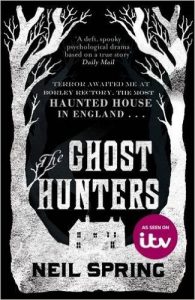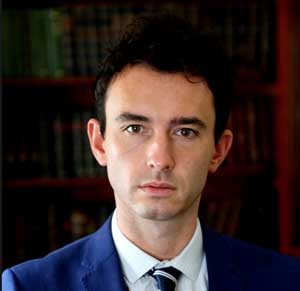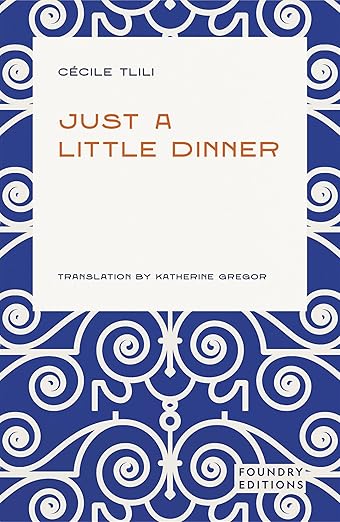Imber – The Lost Village
It is with ghostly tingling pleasure that Neil Spring decided to come and chat about The Lost Village. A ghost village and the mysteries which surround it? A village which really exists and where the inhabitants really were evicted by the military? Imagine the lost souls around this area?
I admit to being nervous about what I was about to find out. I mean, I’m no Harry Price or Sarah Grey and didn’t even read this book when it got dark. So would the author scare me further?

The Lost Village (c )The BookTrail
Over to Neil Spring:
BookTrail The Lost Village here
In the middle of Salisbury Plain, at the bottom of a low valley, are the remains of an abandoned village. Deserted at the outbreak of the Second World War, Imber has since been used by the army to train its troops but over the years has developed a ghostly reputation. The people who lived there were told that they would one day be allowed to return but ever since Imber has remained out of bounds.

Salisbury Plain (c) cco Pixabay
It’s a long tradition that in the winter months, Imber reopens to the public and a service is held in its church, which stands behind barbed-wire fences. Strange occurrences have been reported. In one report, voices were heard coming from empty buildings, along with the smell of cooking food. In another, dogs were heard barking from behind an abandoned manor – Imber Court – though no animals were ever found at the site.

Nags Head Cottages and Imber Court (c) The Travelling Reader
Perhaps most hauntingly, the metallic sounds of hammer striking an anvil have been heard; a report which evokes the long-rumoured grief of the villager’s blacksmith, who reportedly died of a broken heart after the evacuation.

Are you ready to enter Imber? (c) The Travelling Reader
With such tales coming from an authentic “ghost village”, a spectral tale inspired by the history of Imber and its ghostly-goings on was an irresistible inspiration for a novel based on the inter-war investigations of the enigmatic paranormal debunker, Harry Price.

The Imber Village Sign (c) The Travelling Reader
A sequel to The Ghost Hunters
 When my debut novel, The Ghost Hunters, was adapted into a television film for ITV (Harry Price: Ghost Hunter), Quercus suggested that readers would be excited to read more about the adventures of the enigmatic Harry Price and his intrepid assistant, Sarah Grey.
When my debut novel, The Ghost Hunters, was adapted into a television film for ITV (Harry Price: Ghost Hunter), Quercus suggested that readers would be excited to read more about the adventures of the enigmatic Harry Price and his intrepid assistant, Sarah Grey.
Harry Price was a real psychical investigator; a maverick who achieved infamy during the inter-war period for his otherworldly investigations, and although this story is entirely imaginary, some of it was inspired by Price’s own writings and experiences. Price was an elusive character; to some, he was a scientist, a discoverer who was determined to prove the truth about life after death; to others, he was a fierce sceptic, the scourge of every spiritualist medium in London with something to hide.
The Library and the Coffin
Writing The Lost Village, I visited the Harry Price Magical Library at the University of London, Senate House, where shadows stalk the dusty stacks and secrets linger. The library used to be based on the eight floor of Senate House. The only way up was via a small lift, the same size and shape as a telephone box. The librarians used to call this “the coffin.”
This collection is the largest of its kind anywhere in the world, complete with rare and ancient volumes on the arts of magic and summoning ghosts. I wanted to read Price’s many investigations, his letters and articles. I wanted to explore the many aspects of this fascinating character and discover what set him on his path of investigation into the unknown. But the more I read, the more I discovered about Price’s private life and his curious, contradictory beliefs, which oscillated between scepticism and belief. And the more intrigued I became.

A photograph of paranormal investigator Harry Price, taken by spirit photographer William Hope in 1922
I’m not sure anyone could claim to have known the true man behind the façade that Harry Price presented to the media, his followers and his critics. Harry was a businessman. But he was a skilled conjuror (and member of the Inner Magic Circle), a photographer, engineer and journalist. He was very defensive about his working-class origins constantly seeking academic recognition and validation, and craving fame and publicity. I wanted to discover the truth about this man through fiction.
I wanted to know: why was he so determined to prove the truth about life after death? And why were so many eminent psychologists and scientists prepared to follow him on that quest?
I plundered the archives, re-discovered Price’s investigations, his letters and articles. Then wove a story around those elements, exploring the many aspects of this fascinating character and discovering what set him on his path of investigation into the unknown.
Ghost stories….based on real situations, events or cases
I have always delighted in reading ghost stories, their unease and their blurring of reality. At Oxford I wrote my philosophy thesis about paranormal events. That led me into exploring the subject more widely through fiction. Ghost stories concern themselves with personal despair, guilt and the destruction of hope and love. In The Lost Village, our characters learn, to their peril, that those who hunt ghosts are hunted, in turn, by them. But on that strange and sinister journey, they also come to understand a great deal about lost lives, places and times.
Ghost stories, their popularity…
The power of a ghost story lies in what is suggested rather than what is seen. They play on our primal fear of the dark and our anxieties about our psychological well-being. People love to feel scared. It’s part of human nature. Perhaps that is why ghost stories possess such enduring appeal. With their glimmers on intruding presences, they seduce us with a controllable unease that we can prepare for and perhaps even gain mastery over through reading. We can feel the fear but, when the last page is turned, we can put that fear away again in a way we can’t always do the terrors of real life.

Abandoned Tanks at Imber (c)The Travelling Reader
Setting a book in Imber
A genuine ‘ghost town’, Imber truly is a creepy location: remote, dangerous and eerily deserted. In many ways, Imber is a monument to the horrors of war. The story of the village is a story of sacrifice. Tales of the supernatural don’t have to terrify; they can be beautifully sad, and what happened to Imber and its residents, in many ways, was just tragic. These houses had been homes for families and friends and lovers. A vanished community. Noble people, who had left those homes behind for a greater good; who had gone peacefully, with fortitude and courage. There was something irresistible to me about that idea. You read about haunted houses all the time. But a haunted village? I just couldn’t resist! Time hadn’t simply frozen in Imber; time was wounded, permanently in pain. And perhaps, still waiting for its residents to come home.

Imber houses (c) The Travelling Reader
Visiting Imber. My thoughts and feelings on seeing it
I did visit when I was much, much younger but not when writing the book. I wanted some distance to reimagine a haunted landscape, a village of barren beauty that was eternal, a place where the past and present meet in uneasy union. And it occurred to me writing the book that Imber’s decaying houses weren’t just the relics of neglect; they were the causalities of trauma. Time hadn’t simply frozen in Imber; time was wounded, permanently in pain. There was something intensely creepy about that idea that I hope comes through in the book.

Imber Church (c) Imber Church
Potential for more stories following Harry and Sarah?

Neil Spring
My immediate plans are to focus on creating new, stand-alone books, but I wouldn’t rule out returning to the world of the Harry and Sarah if the right story suggested itself. The door is open to that potential but readers should prepare for something very dark and contemporary and stand alone for my fourth novel, which is publishing next year.
And with that I leave Neil as he heads off on his next journey to scare the living daylights out of me. Neil Spring will be responsible for an increase in sales in nightlights and lightbulbs in general I shouldn’t wonder. Hope he gets a share of the profits. Harry Price would be proud.
With many thanks to Neil and for our lovely friends at @TheTravellingReader who were lucky enough to go to Imber and take some pics! I remain behind the sofa 😉
BookTrail Boarding Pass: The Lost Village
Twitter: @NeilSpring Web: neilspring.com




